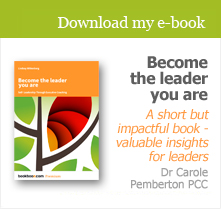Power, voice and the relational nature of work

Torn between family and the office
He was a C-suite leader in a multinational company, fulfilling a demanding, multi-faceted role that also involved international travel, in a job and a company he loved. His home was a flight away from the company’s headquarters, and the company was adjusting to life after the worst of the COVID-19 pandemic. His CEO wanted staff in the office four days a week, which meant that this leader wasn’t seeing his young children for most of the week. He was beginning to feel peripheral to his family – and he was troubled by this. He knew that for his own and his family’s wellbeing he wanted to be in the office only two days a week.
Not safe to raise his dilemma
He was, however, very hesitant to raise his dilemma with his CEO. Some of his peers were in similar positions, but it didn’t seem to bother them in the same way it bothered him, which left him feeling uncomfortably different. The prospect of suggesting to his boss (who had arrived relatively recently in the organisation) that he work from home two days a week threatened his sense of safety – he felt out on a limb, risking his sense of belonging (arguably the deepest human need), and he was nervous about the impact on others’ perceptions – primarily his boss’s, but also his colleagues’. The way he talked about it was almost with a sense of shame, of inadequacy. Equally, he felt strongly that he was missing out on his children’s lives and development (and they were missing out on him) and putting an undue burden on his wife.
The distribution of power
His story has made me think not only about work-life balance, but also about the distribution, perception and use of power, and what it takes for a leader to experience the ease and the sense of wellbeing that can help release more of what he or she is capable of.
He wasn’t regarding the encounter with his boss as a conversation between equals, trying to work out the best all-round solution, but rather as a request for permission. It struck me that the predominant dynamic was an imbalance of power, in contrast to the possibility of creative collaboration.
When your voice isn’t heard
I’ve wondered too about the extent to which this leader anticipated his voice being heard: he didn’t seem to be hopeful that he would indeed be heard. When your voice isn’t heard, and the balance (or indeed price) of your contribution isn’t acknowledged, but there’s no space for a conversation between equals, something in you and about you is suppressed – and it doesn’t just disappear. It might develop into a sense of frustration, or even further into an inability to tolerate the conditions. It might manifest in physical symptoms (I’ve coached people whose eczema or poor sleep or back-ache were related to voicelessness), or in anxiety.
Working lives and the requirements of the business
It’s not the presence or the structure of the (necessary) hierarchy that intrigues me, but rather how that hierarchy is lived. What’s the price it exacts from its people, or rather is it prioritising the conditions that will create the happiest and healthiest working lives for those people – at the same time (and this is the challenge for leaders) as fulfilling the requirements of the business? How might leaders surrender some of the order and uniformity that seems to ease the path towards fulfilling their agendas? How might they live with more of the trust and versatility that might incidentally result in more unpredictability and uncertainty? How might they learn to encounter that uncertainty and manage themselves through it? How might their people feel seen and heard in a way which makes it easier for them to deliver – which, in turn, makes their delivery more sustainable? How might leaders enable their people to step into, and leverage, more of their own power?
Less individualised and more relational
In short, how might both leader and led transform their perceptions of their roles and their places into something less atomised and individualised and something more relational? While an individualised perception focuses on the individual’s power and responsibility to accomplish and achieve, a more relational perception sees capacity as enabled by relationship, by the willingness and ability to truly relate to, listen to – and be consistently curious about – others’ agendas, motivations, contexts, influences and interdependencies.
Step back and detach from a serial view
This is a challenge when tasks need fulfilling, stakeholders’ interests need to be served, and urgent issues demand attention and strategy. But leaders who take the vision and time to step back, detach from their own, serial view of how things happen, and pay more attention to others’ experiences of what underlies, surrounds, connects to and accounts for how things happen may find that the results they were driving for actually get produced in different, more streamlined, ways.
Psychological safety can produce richer results
Leaders I’ve worked with have discovered that starting with what enables psychological safety – honest conversations, safety to experiment and make mistakes, asking for and offering help, and embracing difference – has produced results of greater richness and longevity than they ever anticipated (see more on psychological safety here).


